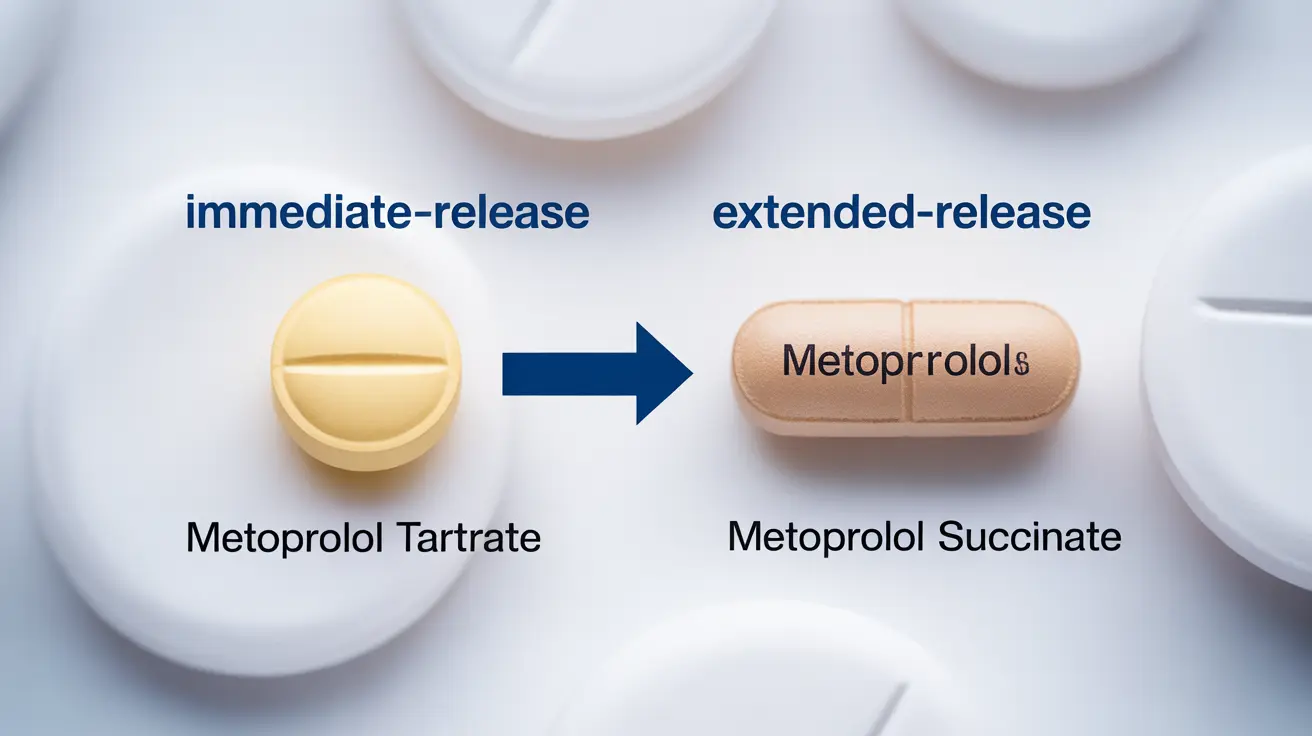For patients managing heart conditions, understanding the differences between metoprolol tartrate and metoprolol succinate is crucial for optimal treatment outcomes. While both medications belong to the beta-blocker family and contain the same active ingredient, their formulations and uses differ significantly. This comprehensive guide explores the key distinctions between these two important cardiac medications.
Understanding the Basics of Metoprolol Forms
Metoprolol comes in two distinct salt forms: tartrate and succinate. Each formulation has been specifically designed to address different cardiac conditions and patient needs. The main difference lies in how these medications are released into the body and their duration of action.
Key Differences in Formulation and Release
Metoprolol tartrate is an immediate-release formulation that quickly enters the bloodstream and requires multiple daily doses. In contrast, metoprolol succinate is an extended-release formulation, engineered to provide steady medication levels throughout the day with once-daily dosing.
Release Mechanisms
The tartrate form releases the medication quickly, leading to rapid absorption but shorter duration of action. The succinate form uses a specialized extended-release technology that gradually releases the medication over 24 hours, maintaining consistent blood levels.
Primary Uses and Applications
Metoprolol Tartrate Applications
Metoprolol tartrate is commonly prescribed for:
- Acute heart attack management
- Angina (chest pain)
- High blood pressure requiring immediate control
- Arrhythmia treatment
Metoprolol Succinate Applications
Metoprolol succinate is typically used for:
- Chronic heart failure management
- Long-term blood pressure control
- Prevention of heart attack and stroke
- Stable angina maintenance therapy
Dosing Schedules and Administration
The dosing schedule represents one of the most significant differences between these medications. Metoprolol tartrate is usually taken in divided doses, typically twice or three times daily. Metoprolol succinate is administered once daily, which can improve patient compliance and provide more consistent blood levels.
Side Effects and Tolerability
Both forms of metoprolol share similar side effect profiles, including:
- Fatigue
- Dizziness
- Slow heart rate
- Cold hands and feet
- Sleep disturbances
However, the succinate form's extended-release nature may result in fewer peak-related side effects compared to the tartrate form.
Frequently Asked Questions
What are the main differences between metoprolol tartrate and metoprolol succinate?
The main differences lie in their release mechanisms and dosing schedules. Tartrate is immediate-release and taken multiple times daily, while succinate is extended-release and taken once daily.
Can metoprolol tartrate and metoprolol succinate be used interchangeably for heart conditions?
No, these medications are not directly interchangeable. Each form has specific indications and should be prescribed based on the particular heart condition and treatment goals.
How often should metoprolol tartrate and metoprolol succinate be taken?
Metoprolol tartrate is typically taken 2-3 times daily, while metoprolol succinate is taken once daily due to its extended-release formulation.
Which form of metoprolol is prescribed for heart failure versus heart attack prevention?
Metoprolol succinate is typically prescribed for chronic heart failure management, while tartrate is often used in acute situations like heart attack treatment.
What are common side effects of metoprolol tartrate compared to metoprolol succinate?
Both forms share similar side effects, but succinate's extended-release nature may result in fewer peak-related side effects compared to tartrate's immediate-release formulation.
Understanding these differences helps ensure optimal treatment outcomes for patients requiring beta-blocker therapy. Always consult with a healthcare provider about which form is most appropriate for your specific condition.




